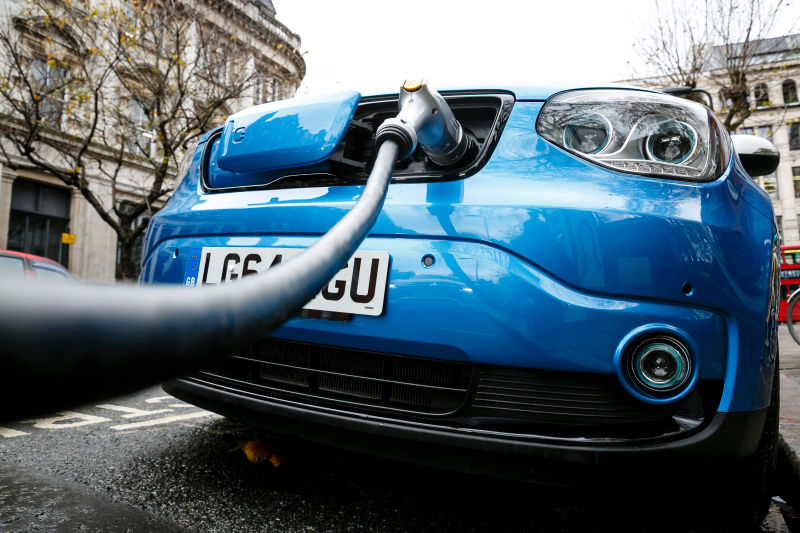
The electric-car market is growing, but remains small. A majority of drivers still stop at the station regularly, filling up their gas-guzzling vehicles and allowing the oil industry to stay in business. But Bloomberg projects more than a third of all cars will be electric by 2040, and the oil companies aren’t buying it.
Through numerous calculations based on current rates of car sales, Bloomberg recently predicted the 2020s to be the decade of the electric car—starting just under four years from now.

With a 35 percent decline of battery prices in 2015, the projection slated electric cars to be as affordable as their gasoline counterparts within just six years. Bloomberg predicts that will spark a widespread adoption of electric cars.
Advertisement
That trajectory sounds ambitious, but with the rise of electric cars and the ever-increasing number of plans for “Tesla fighters,” perhaps it isn’t.
The real “magic year” for electric cars won’t come until 2040, according to the Bloomberg projections. That year, the average long-range electric car could less than $22,000, and 35 percent of all new vehicles on the road would be equipped with a plug.
Sponsored
For now, electric cars make up a minuscule fraction of road cars—just a tenth of a percent, according to the report. They’re also expensive. And whether it be by denial or by a force of knowledge the rest of us don’t have, a good portion of the oil industry isn’t intimidated by the future of those numbers. From Bloomberg:
OPEC maintains that electric vehicles (EVs) will make up just 1 percent of cars in 2040. Last year ConocoPhillips Chief Executive Officer Ryan Lance told me EVs won’t have a material impact for another 50 years—probably not in his lifetime.
But the numbers the oil industry uses to calculate the growth of electric cars is small, and fairly unrealistic. Bloomberg continued:
“If you look at reports like what OPEC puts out, what Exxon puts out, they put adoption at like 2 percent,” said Salim Morsy, BNEF analyst and author of today’s EV report. “Whether the end number by 2040 is 25 percent or 50 percent, it frankly doesn’t matter as much as making the binary call that there will be mass adoption.”
In predicting the potential for a so-called “crisis” in the oil market in the wake of electric-car production, Bloomberg slated that event—which would entail electric cars displacing two million barrels of oil per day—could occur as early as 2023. But that’s aggressive, and accounting for sales drop-offs on electric vehicles would put that crisis further down the road by several years.
There are, of course, hurdles. Gas is incredibly cheap right now, leading buyers to load up on big trucks and SUVs and all but ignore EVs and hybrids. Some predict that cheap gas could stick around forever. There’s still the infrastructure problem as well—a chicken-and-egg situation that prevents charging stations from being as widespread as gas stations, and many Americans likely still find charge times to be inconvenient. (And as the story notes, developing markets are likely to keep with fossil fuels much longer than the U.S. or Europe.)
Advertisement
The report additionally laid out a potential future for electric cars, which looks to be moving in the right direction. The full analysis offers an interesting look at what could become of the electric-car and oil markets, and the graphs—along with the rest of the report—can be found here.
Do you think the next decade will see the great electric car boom?
Photo credit: Miles Willis/Stringer/Getty Images
Contact the author at alanis.king@jalopnik.com.













